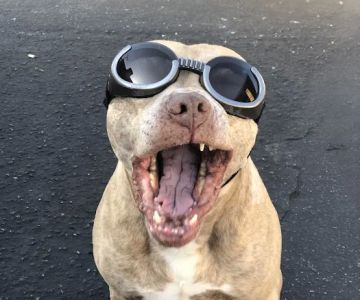How to Become a Veterinary Radiologist: A Complete Guide
- What is Veterinary Radiology?
- Education Requirements for Veterinary Radiologists
- Key Skills Needed to Become a Veterinary Radiologist
- Career Path and Opportunities for Veterinary Radiologists
- Real-Life Experience: A Day in the Life of a Veterinary Radiologist
- Book a Consultation for Your Veterinary Radiology Needs
If you have a passion for both animals and technology, becoming a veterinary radiologist might be the perfect career for you. Veterinary radiologists are specialists who use imaging techniques to diagnose and treat diseases in animals. These professionals play an essential role in the veterinary field, helping to detect conditions that are invisible to the naked eye. In this guide, we’ll take you through the steps on how to become a veterinary radiologist, the skills required, the education path, and the rewarding career opportunities that await you.

1225 Warren Ave, Downers Grove, IL 60515, USA
See Details1. What is Veterinary Radiology?
Veterinary radiology is a subspecialty of veterinary medicine focused on using diagnostic imaging tools to examine and treat animals. Radiologists in this field use techniques such as X-rays, CT scans, MRIs, and ultrasounds to identify a wide range of conditions, from broken bones and tumors to soft tissue damage and heart problems. These imaging techniques allow veterinarians to observe internal structures without performing invasive surgery, which is crucial in the diagnosis and treatment of various animal diseases.
The role of a veterinary radiologist is highly specialized and requires a deep understanding of both veterinary medicine and advanced imaging technology. These professionals not only interpret images but also collaborate with other veterinary specialists, such as surgeons, oncologists, and internal medicine experts, to develop treatment plans based on their findings.
2. Education Requirements for Veterinary Radiologists
To become a veterinary radiologist, you’ll need to go through a specific educational path, which can take several years of training. Here’s a breakdown of the general steps you’ll need to take:
- Earn a Bachelor’s Degree: The first step to becoming a veterinary radiologist is completing a bachelor’s degree, typically in a science-related field like biology, chemistry, or animal science. This undergraduate education provides the foundation for the medical and scientific knowledge needed in veterinary medicine.
- Attend Veterinary School: After earning your bachelor’s degree, you will need to attend a veterinary school to become a licensed veterinarian. Veterinary programs generally take four years and include both classroom learning and hands-on clinical experience. You’ll learn the fundamentals of animal health, disease prevention, and treatment methods, and will be trained in various types of veterinary care.
- Complete a Radiology Residency: After becoming a licensed veterinarian, you’ll need to complete a radiology residency, which typically lasts around three years. During this residency, you’ll receive specialized training in diagnostic imaging techniques and gain practical experience working with animals. This residency is usually done at a teaching hospital or an academic institution.
- Get Board Certification: After completing your residency, you can choose to become board-certified in veterinary radiology by passing a certification exam offered by the American College of Veterinary Radiology (ACVR) or other recognized certifying bodies. Certification is not mandatory but can enhance your job prospects and credibility in the field.
3. Key Skills Needed to Become a Veterinary Radiologist
In addition to formal education and training, veterinary radiologists need a variety of skills to excel in their roles. Here are some of the key skills required:
- Attention to Detail: Veterinary radiologists must be able to carefully analyze diagnostic images to identify subtle abnormalities or conditions that may not be immediately obvious. Precision is critical in ensuring accurate diagnoses.
- Strong Communication Skills: Although radiologists typically work behind the scenes, they must be able to clearly communicate their findings to other veterinarians, pet owners, and sometimes researchers. Effective communication ensures the proper treatment plans are developed.
- Technical Proficiency: As a veterinary radiologist, you’ll be working with advanced imaging technologies. A strong understanding of how these tools work and how to use them effectively is essential for success in this career.
- Problem-Solving Abilities: Veterinary radiologists often encounter complex cases, and they must be able to use their knowledge and critical thinking skills to interpret results and collaborate with other specialists to determine the best course of action.
4. Career Path and Opportunities for Veterinary Radiologists
Veterinary radiologists have a wide range of career opportunities available to them, depending on their interests and goals. After completing their training and certification, many veterinary radiologists go on to work in the following areas:
- Private Veterinary Practices: Some veterinary radiologists choose to work in private veterinary clinics, either as specialists or as part of a larger practice that offers imaging services. They may work alongside general practitioners or other specialists in diagnosing and treating pets.
- Academic Institutions: Veterinary radiologists can also work in academic settings, where they teach and train future veterinarians. Many universities and veterinary schools offer opportunities for veterinary radiologists to conduct research and teach diagnostic imaging techniques.
- Veterinary Hospitals: Large veterinary hospitals or animal health centers often employ radiologists to provide specialized imaging services. These hospitals may work with a wide variety of animal species and handle complex cases requiring advanced diagnostic tools.
- Industry and Research: Veterinary radiologists may also work in research and development, contributing to advancements in imaging technologies and the development of new treatment methods. These roles may be based in private industry, government agencies, or non-profit organizations.
5. Real-Life Experience: A Day in the Life of a Veterinary Radiologist
To give you an idea of what it’s really like to work as a veterinary radiologist, let me share a story about Dr. Sarah, a veterinary radiologist at a leading animal hospital. Dr. Sarah spends her days interpreting diagnostic images, from X-rays to MRIs, to help diagnose conditions in animals of all types. One of her most rewarding cases was when she discovered a hidden fracture in a horse’s leg through a set of X-rays. Without her expertise, the injury might have gone unnoticed, potentially leading to long-term damage. Her ability to accurately diagnose and communicate the findings to the surgical team allowed the horse to get the proper treatment and recover fully.
Working as a veterinary radiologist can be incredibly rewarding, but it’s not without its challenges. The job requires long hours, attention to detail, and the ability to make quick, informed decisions. But for those who love working with animals and technology, it’s a fulfilling career that offers the opportunity to make a significant impact on animal health.
6. Book a Consultation for Your Veterinary Radiology Needs
If you are interested in pursuing a career as a veterinary radiologist or simply want to learn more about the field, there are many resources available to help guide you on your journey. Whether you’re a student seeking advice on which path to take or a practicing veterinarian looking to specialize in radiology, you can book a consultation with professionals in the field to gain insights and advice.
In addition, for pet owners seeking imaging services for their animals, there are many veterinary radiology clinics and hospitals where you can book consultations and imaging appointments. If you’re looking for expert advice on your pet’s health or want to explore diagnostic imaging options, don’t hesitate to reach out to a qualified veterinary radiologist.










